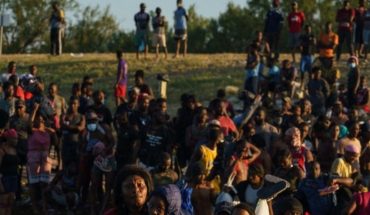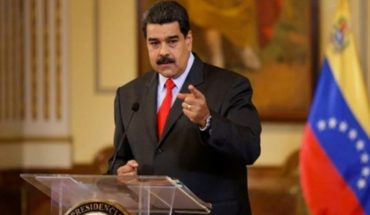The Draft Budget of Expenditures 2022 (PPEF) that was delivered this Wednesday to Congress sets for next year increases of less than 1% to programs such as Health Care and Free Medicines for the Population Without Social Security, Care for People with Disabilities, Epidemiological Surveillance, Strengthening of State Health Services, Prevention and Care against Addictions, HIV and Maternal, Sexual and Reproductive Health.
The Health Care and Free Medicines, of the Health Institute for Welfare (Insabi), was assigned in the PPEF 2022 an amount of 77 thousand 572 million 687 thousand 121 pesos, which represents a marginal increase of only 0.34%, in real terms, compared to the amount that was approved in 2021, which was 74 thousand 766 million 713 thousand 112 pesos.
This is despite the fact that in the Explanatory Memorandum section of the PEEF 2022 and in the Programmatic Structure of Branch 12, Health, it is established that among the priorities is to ensure free medical care and medicines.
You may be interested: Pension for older adults, social program that grows the most: it would double budget for 2022
The Budget Program “Health Care and Free Medicines for the Population without Labor Social Security” (U013) of INSABI, says the document of the Programmatic Structure of this branch, will allocate its resources to the free provision of services and will comply with the scheduling of transfers of budgetary resources to the states for health care and free medicines for the population without labor social security.
The marginal increase comes after a year in which complaints about lack of medicines and healing material have multiplied and that in the document of the Third Government Report of President Andrés Manuel López Obrador it was reported that only 3.1% of the oncology drugs requested had reached the states until June.
Other programs that have increases of less than 1% are: the program of attention to people with disabilities to which an amount of 26 million 735 thousand 043 pesos was assigned in the PPEF 2022, which represents an increase of 0.34%, in real terms, compared to what was approved in 2021.
Epidemiological surveillance has by 2022, 570 million 196 thousand 453 pesos (0.30% more than approved for this year); Strengthening of State Health Services, one thousand 711 million 042 thousand 889 pesos (+0.34%); Prevention and Care against Addictions, one thousand 466 million 984 thousand 173 pesos (+0.35%); Maternal, Sexual and Reproductive Health, 2 thousand 121 million 800 thousand 210 pesos (+0.35%).
They also have marginal increases, Prevention and Care of HIV/AIDS and other Sexually Transmitted Infections, to which in the PPEF 2022, 482 million 813 thousand 189 pesos were assigned, an increase of only 0.34%, in real terms, with respect to what was approved in 2021; while Protection against Health Risks has 603 million 515 thousand 431 pesos, an increase of only 0.25% compared to the 2021 budget.
There are also programs that have less budget, such as the Prevention and Control of Overweight, Obesity and Diabetes, which registers an amount in the PPEF 2022 of 582 million 306 thousand 187 pesos, which represents a decrease of 0.81%, in real terms, with respect to what the Chamber of Deputies approved for the current year.
The Program to Strengthen Medical Care also has a decrease, in this case of 8.59%, in real terms, going from 912 million 378 thousand 521 pesos to 862 million 384 thousand 732 pesos.
Strengthening InSABI’s Medical Care has among its objectives to contribute to ensuring effective access to quality health services, through the annual transfer of federal budgetary resources as subsidies to the federal entities for the operation of Mobile Medical Units, in which primary health care services are provided in localities with less than 2,500 people, who are without access to health services due to lack of infrastructure or in a disaster situation.
Rectory in health is another of those that has a cut, went from a budget approved in 2021 of one thousand 029 million 554 thousand 758 pesos to 948 million 713 thousand 076 pesos, a fall of 10.88%.
The main actions of this program for 2022 are: intensify the mechanisms for the regulation, surveillance, control and supervision of health care facilities; strengthening of the strategic planning of the development of physical health infrastructure and its equipment; conduct the evaluation process of public health and health care services to promote transformacThe improvement of the National Health System and the directing and strengthening of the health information system.
Those who did win
The largest increase of all the programs of the Ministry of Health is registered by the Vaccination, which has an amount allocated in the PPEF 2022 of 28 thousand 734 million 344 thousand 022 pesos, which represents an increase of 1190%, in real terms, with respect to the budget approved by the Chamber of Deputies for 2021, and which was 2 thousand 153 million 522 thousand 906 pesos.
In the document of Programmatic Structure of Branch 12, Health, it is established that the National Center for The Health of Children and Adolescents, which implements the “Vaccination Program” (E036), will carry out campaigns to increase coverage in children of 1 year of age.
This will be complemented by three educational communication campaigns on vaccines and vaccine-communicable and vaccine-preventable diseases. The document highlights the application of the third dose of acellular hexavalent vaccine to children under one year of age; as well as monitoring the use of the National Health Cards for children from 0 to 9 years and for adolescents from 10 to 19 years, in addition to vaccination coverage against seasonal influenza in children and adolescents from 0 to 19 years. Of the COVID-19 vaccines there is nothing mentioned.
They also have a larger budget, administrative support activities, which go from 3 thousand 731 million 591 thousand 498 pesos to 11 thousand 445 million 541 thousand 706 pesos, an increase, in real terms, of 196%.
Comprehensive social assistance services have an increase of 166%, and from there there are others with more modest increases, such as Infrastructure maintenance, with 28.9%, Prevention and control of diseases, with 19.23% and Training and training of human resources for health, with 8.6% increase, whose objective is that all doctors specialized in training complete clinical postgraduate studies.
The Health Care program -in charge of the Coordinating Commission of National Institutes of Health and High Specialty Hospitals (CCINSHAE), which groups precisely these institutions- was assigned an amount, in the PPEF 2022, of 51,671 million 570 thousand 446 pesos, which represents an increase, in real terms, of 11.60% compared to the amount of 44 thousand 779 million 058 thousand 663 pesos, which was approved in 2021.
The CCINSHAE includes, for example, the National Institute of Respiratory Diseases (INER), which has been on the front line of care for those affected by COVID-19, as well as the National Institute of Nutrition, the Institute of Cancerology, Pernatology and Pediatrics, to which patients from all the states of the Republic are usually referred.
What we do at Animal Político requires professional journalists, teamwork, dialogue with readers and something very important: independence. You can help us keep going. Be part of the team.
Subscribe to Animal Político, receive benefits and support free journalism.#YoSoyAnimal





